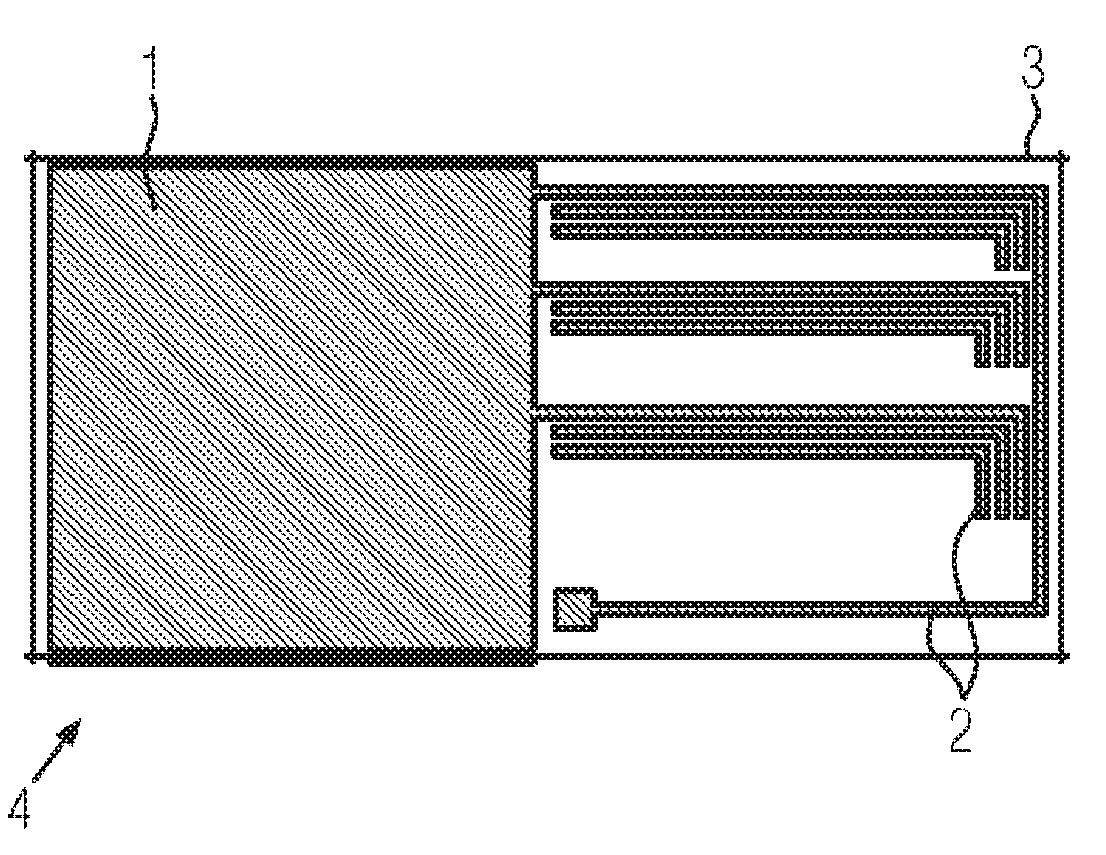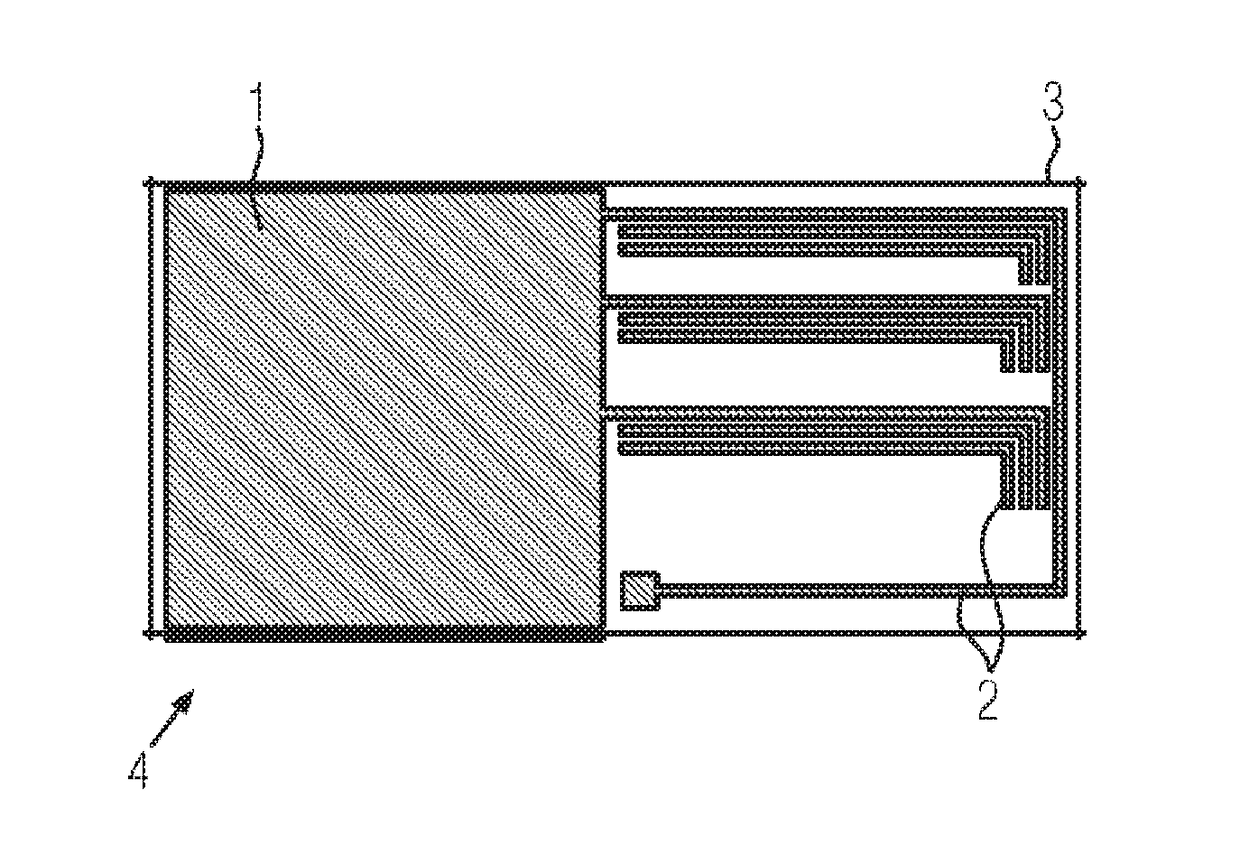Multi-level metalization on a ceramic substrate
- Summary
- Abstract
- Description
- Claims
- Application Information
AI Technical Summary
Benefits of technology
Problems solved by technology
Method used
Image
Examples
example
[0028]First of all, the entire electrical layout consisting of a high power area and a low power area is printed as metalization 50 μm high with a copper-based paste having a glass portion of 6% on a lasered ceramic substrate consisting of AlN having a thickness of 0.63 mm. Laser treatment of the ceramic substrate ensures, so that later a separation by severing along the break line is possible. Then only the high power area or the metalization thereof, upon which the power component is later soldered, is brought to a 350 μm metalization thickness by further multiple screen or stencil printing processes using a copper-based paste without glass component. Thereafter the metalized component is annealed at 910° C. for 8 min under N2.
[0029]The high power area of the metalized and annealed ceramic substrate by itself is then in this example 310 μm high. The metalization of the low power area is 40 μm high. The high power area and / or copper thereof is then mechanically leveled by a grindin...
PUM
| Property | Measurement | Unit |
|---|---|---|
| Temperature | aaaaa | aaaaa |
| Length | aaaaa | aaaaa |
| Length | aaaaa | aaaaa |
Abstract
Description
Claims
Application Information
 Login to View More
Login to View More - R&D
- Intellectual Property
- Life Sciences
- Materials
- Tech Scout
- Unparalleled Data Quality
- Higher Quality Content
- 60% Fewer Hallucinations
Browse by: Latest US Patents, China's latest patents, Technical Efficacy Thesaurus, Application Domain, Technology Topic, Popular Technical Reports.
© 2025 PatSnap. All rights reserved.Legal|Privacy policy|Modern Slavery Act Transparency Statement|Sitemap|About US| Contact US: help@patsnap.com


